Hi, long time no post! If it’s too long, just read the titles and scroll to whatever section you’re interested in.
*I am a native English speaker purely speaking about my own experiences. Sometimes, I use strange words and phrases. If you are reading this through AI translation, it may not be correct. Please ask if you have any questions.*
*You can read previous posts on the actual Substack website .*
A few updates:
I’m in America now, and I have more posts so please stay tuned. Although they won’t be immediately current, it’s relative enough and you’ll be able to apply it for future matsuri, events, and learn something… or at least that’s what I hope!
I’m hosting Tawoo style workshops in Chicago in June and July of 2024, but it’s limited. Please contact me directly if you’re interested!
Following, I’ll be traveling with Kaoly san and KaDON for her workshop tour (whoohoo!). Hope I can see you there, but let’s get back to the main, Ushibuka Haiya Bushi matsuri!
What is Ushibuka Haiya?
On the 3rd weekend in April, Ushibuka (牛深), Kumamoto’s most prosperous port town, holds their annual Haiya Bushi matsuri (牛深ハイヤ節り). The town is also considered to be the birthplace of the Haiya folk song.
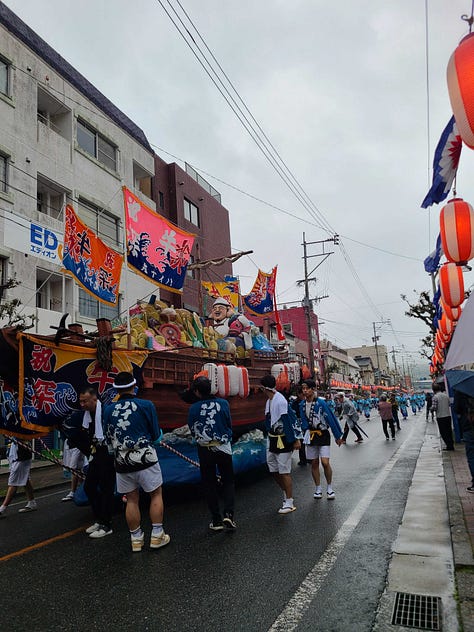
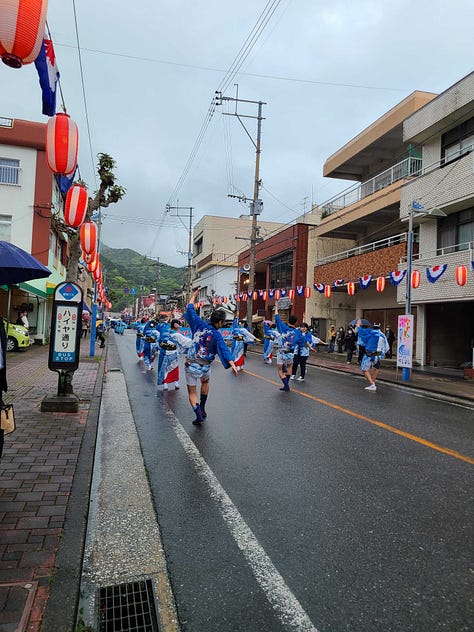
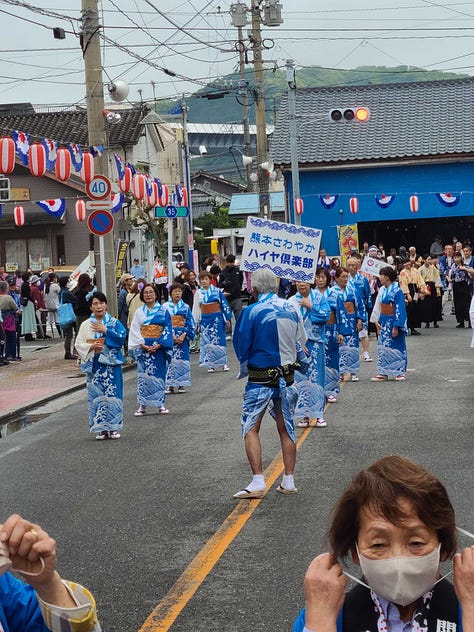
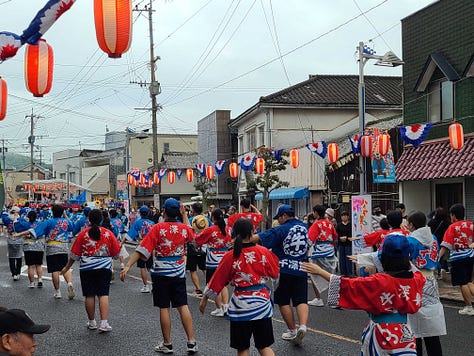
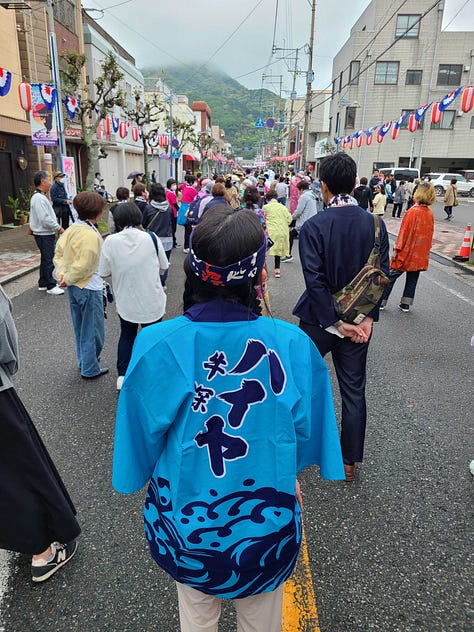

The story is here: http://ushibuka-haiya.com/history/?lang=en
And here (the Tokyo group’s website): https://haiya.biz/?page_id=239
And here: https://www.t-island.jp/en/history-culture/culture.html
And here’s my poorly summarized version (please look at those links!)
Every region has their own min’yo (traditional Japanese folk song), but not many can claim to be the originator. The matsuri (festival) started in 1972, but Haiya Bushi started in the late Edo period. It was originally sung by women to sailors who waited for the southern winds to help them sail up north.“Hae” means southern wind in Japanese, however, it’s pronounced “Haiya.” The lyrics talk about this, but also debauchery and other silly things. As the fisherman had to sing to not fall asleep at sail, these songs spread along their travels all over Japan, which would transform into more known songs like Awa Odori in Awa Jishima, and Sado Okesa of Niigata.
Why am I writing about it?
Roots exploration. I caught up with my uncle on his trip to Japan, and he said to me: “Someday, I hope to go to Kumamoto. I’d like to see where both sides of the family is from. Just to see it, be there, feel it.”
When I got my visa extension, I explored the internet, because I feel things through matsuri, taiko, song, and dance.
To my surprise, I had seen Ushibuka Haiya Bushi over a year ago, and it stuck with me! 偶然に. Why? The rhythm, the body movement, a bright feeling, and even a butt wiggle! It’s not what I’d expect from a traditional min’yo dance. It’s catchy and features a contagious taiko groove with a lingering folky high note that stays in your soul.
You might be asking yourself, isn’t this substack blog/ newsletter supposed to be about taiko?! The origins of taiko varies, and the essence of taiko I want to spread is inexplicably strung to the people it represents, such as in matsuri and song and dance. And in order to play taiko or dance, don’t you need to understand the rhythm and movement of the people?
Hora! Ironically enough, my uncle and mom were busy, but fortunately I could share this unforgettable trip with Kristen who I connected with on Sado Island. We had actually danced Sado Okesa together, which again originates from Ushibuka Haiya! Isn’t it strange how things can work out?
The logistics (click here for schedule):
Amakusa (天草) is one of the many depopulating areas of Japan (region of Kumamoto that Ushibuka resides in). It even has a かかしのさと a.k.a. scarecrow town display, SO you gotta plan far in advance because the amount of visitors can outweigh the accommodations. Fortunately, Kristen had booked one of the only houses in Sakitsu, which is a town that deserves its’ own post, but for now you can read about it here. Best bet is to call far in advance for reservations.
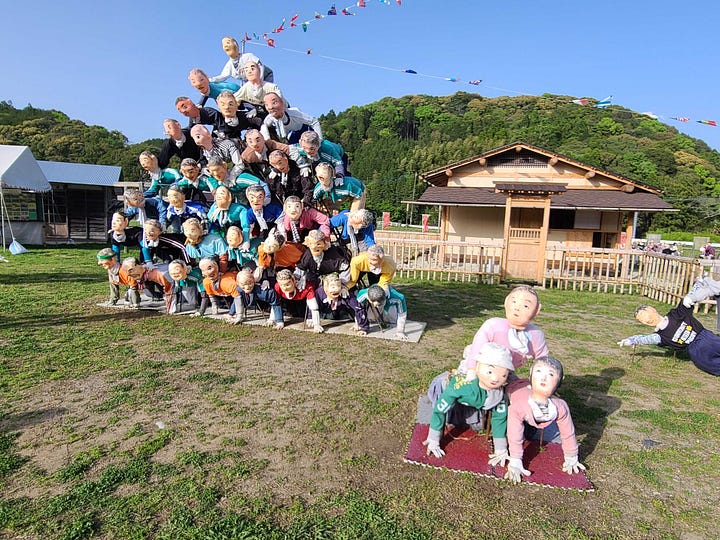
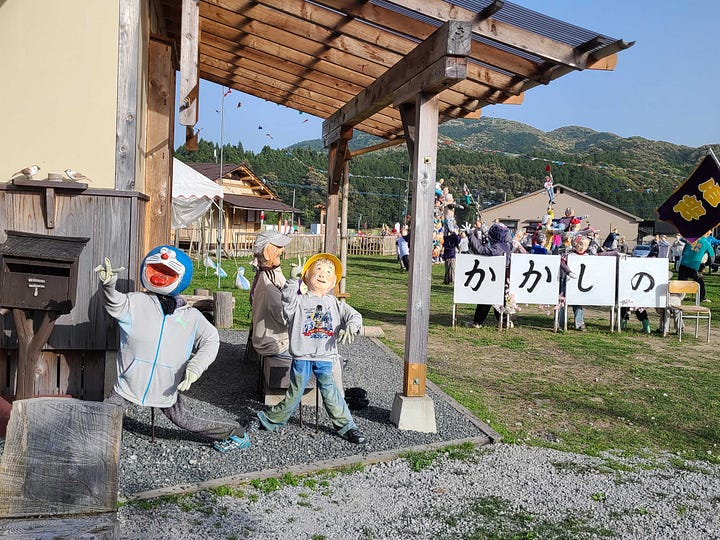
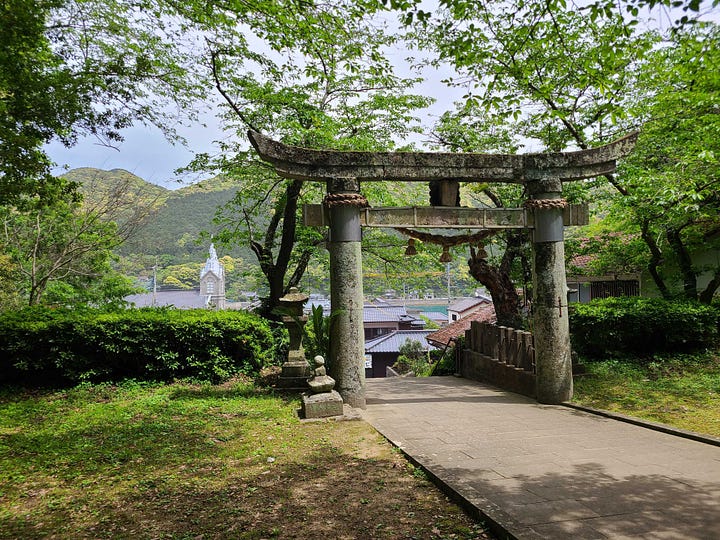

We flew into Aso (region in Kumamoto) and stayed for a day, as the next day would require over 3 hours of driving across 5 bridges, and stopping at the Catholic Museum (yes, they exist in Japan!). We explored Sakitsu, famous for its’ church that’s about a 5 minute walk from the Suwa Shinto Shrine. There’s more to the story about Amakusa, which you can read here. Oh, and they have many cats 🙂
Day 1 of the matsuri started with 9 different versions of Haiya Bushi by groups across Amakusa listed in the photo. The dance resembles life in Ushibuka, such as working at sea, setting sail, drinking too much, or selling the fish. There are many verses, for example the Tokyo Kai version that I learned had 9 verses (almost 10 minutes long total) that sometimes involve taiko sticks, Japanese parasols, flags, and paddles.
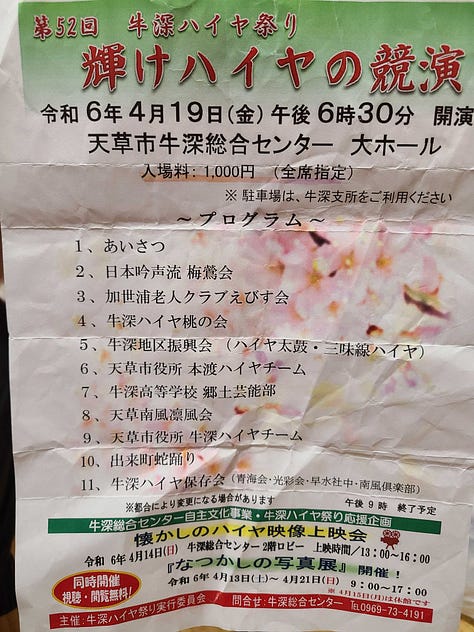
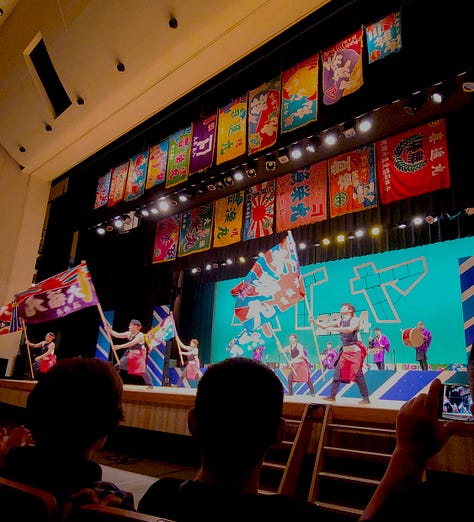
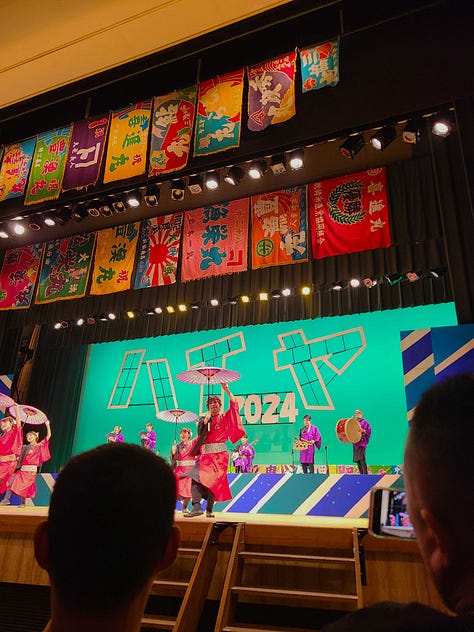
Sometimes in the stage performances, there are silly acting skits that breaks up the dance. And to watch this and a closer view of the the taiko, watch here:
The Ushibuka Haiya Preservation Society is also worth mentioning as these ladies were nonstop teaching, performing, singing, sweating, getting rained on, and just generally preserving history for 3 days straight. (Below).
The following 2 days had rain on and off. Most events took place at a park next to the Haiya Bridge, which includes a stage and many local vendors featuring Ushibuka and Amakusa specialities. Despite the rain, the stage performances continued except for the children’s and high school’s performances which were moved into the auditorium. But what Kristen and I were most excited about was the evening’s “So-odori” or the Grand Haiya dance event for everyone to participate on the street to dance “douchuu odori,” the repetitive version of the Ushibuka Haiya dance.
We learned the dance in the pouring rain, and got to our spot with the tobiiri-maru group (group for the general public). All the groups from the night before, and additional established groups danced in their cohort on the same route. We all started at different places on the route, and danced to the same live music. I can’t accurately capture the feeling of shamelessly dancing in the pouring rain, in the dark, with strangers and a new close friend. Amidst the sheet of rain, we danced towards a brightly lit stage that showed shamisen, taiko, and singers performing together from different groups. And low and behold, Kristen even won a prize for her dancing skills!
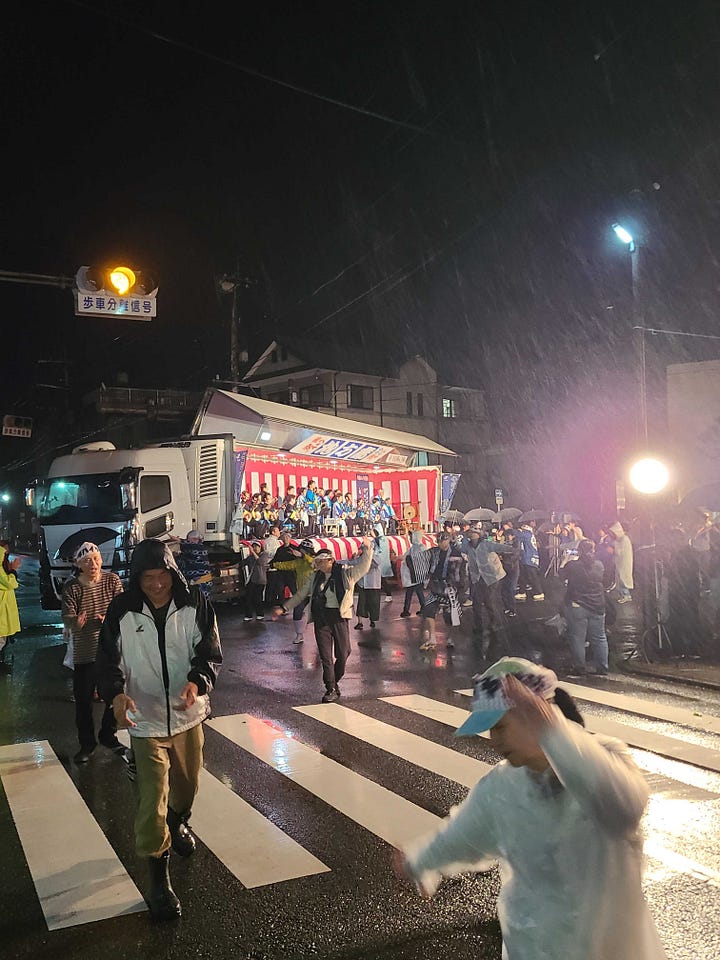

The following day, we returned for the sailboat parade that featured beautiful, signature Ushibuka flags, more performances, and one more douchuu odori in which the rain held off.
Video by the Tokyo Kai here that captures the final 2 days:
Since then and reflections:
Of course, some things are meant to be talked about in-person, but this was one of the most life changing experiences, and it was all by chance. I couldn’t be more grateful to have traveled with Kristen, another taiko playing Nikkei who grew up with many non-Asian Americans, leading to conversations about identity that maybe only a very small subset can relate to. And, we were both lucky to experience a part of Japan that is depopulating and a min’yo that you can’t find easily outside of Kumamoto.
I’m sure you could guess that I had a few breakdowns during this trip, no surprise here :/ . I wondered if this place could’ve been the home to my ancestors, or maybe a long distant relative was in the Ushibuka Haiya crowd. And particularly, was this the specific min’yo of my ancestors, but also, does it even matter? People in Japan don’t consider me Japanese, and I think there are non-Japanese/ Nikkei people who know Japanese culture much better than me. However, here I am crying.
I was told by my teacher that are only 2 Ushibuka Haiya groups outside of Kumamoto (Tokyo and Osaka), and I was asked by some of the Tokyo members to teach it when I return to America.
I often think about geinoh, taiko, and min’yo of the areas that are depopulating, and the potential future of an island that is prone to natural disasters. I’ve been privileged to experience it, and I don’t want it to only stay with me, but I also fear an inferiority, appropriating monster because the dance represents more than what’s at the surface. I’m only at the surface.
でも勿体無いね? I feel some sort of responsibility to continue it somehow. Ironically, my last performance in Japan was this dance at the Furusato Matsuri in Yokohama.
Oh, and food!
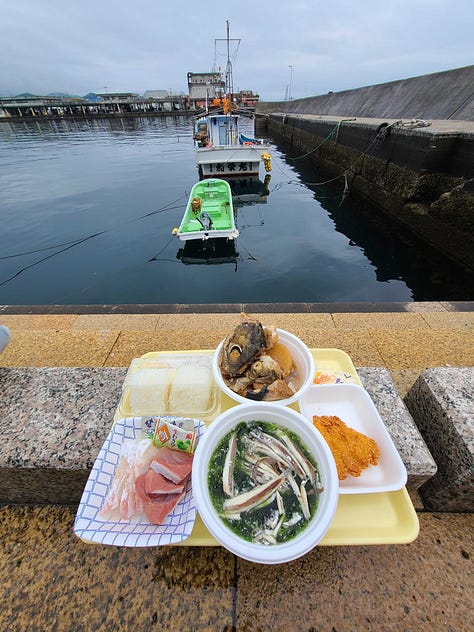
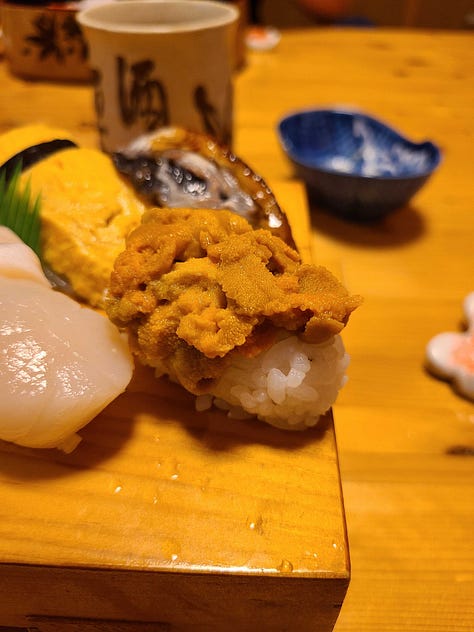
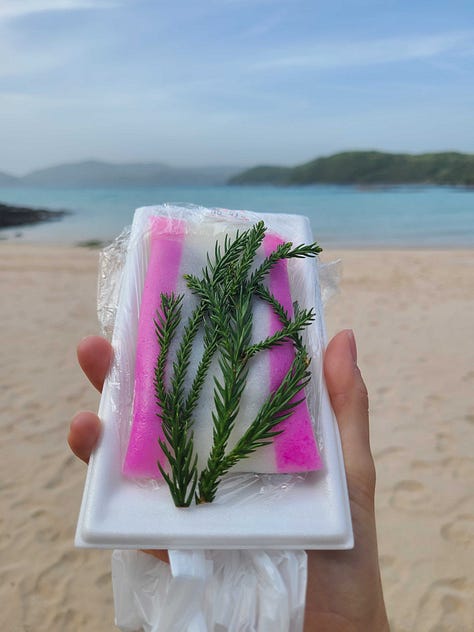
That’s it (for now)!



Hey!!! I’m enjoying your taiko journey along with your reflections. Thank you for sharing this adventure!!